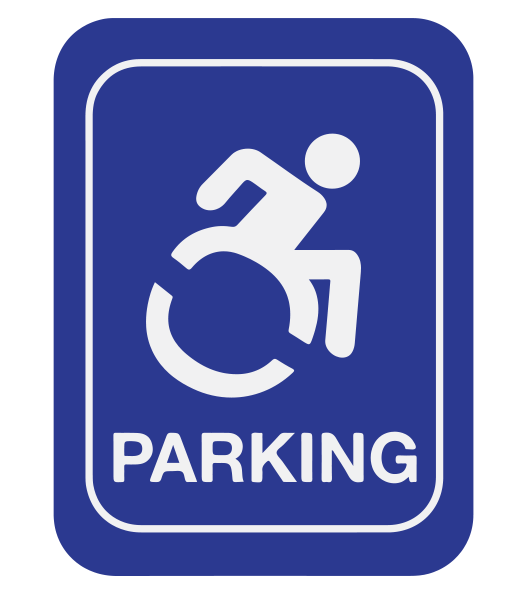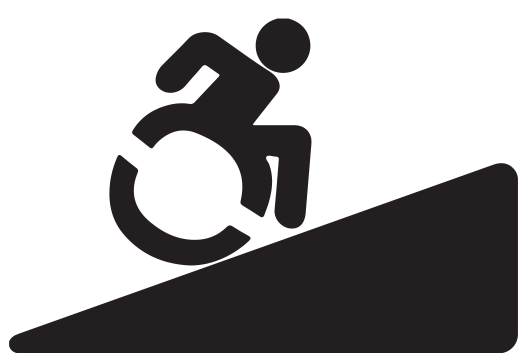Temporary Event Guide
Making your event accessible to all participants supports San Diego State’s mission of providing an inclusive and accessible campus environment for all members of the SDSU community. For individuals with disabilities, accessibility means an event that is free from physical, electronic, and attitudinal barriers. For a full, detailed guide, visit the ADA’s Temporary Event guide at the following link: ADA Temporary Event Accessibility Guide.
Planning and Promotion
When planning a temporary event, it is important to consider that people with disabilities must be able to access the same goods, activities, services, and benefits that are available to other members.
People with disabilities must be able to:
- Obtain information and directions prior to the event.
- Register for the event, if the event requires a registration prior to the event.
- Arrive at the site in the same ways as others can (e.g. via private automobile, taxi, public transportation, event shuttles).
- Find and use accessible parking.
- Get from accessible parking to entrances.
- Obtain additional information and directions on site.
- Move around the site as needed.
- Attend performances, participate in activities, and enter exhibits.
- Experience and enjoy activities, even if the participant’s disability affects their ability to communicate.
- Select and purchase items at concessions.
- Use public toilet rooms, telephones, water fountains, shelters, first aid stations, and other common amenities.
Some resources that can help to ensure these requirements are met are having advisors; either individuals with disabilities or disability resource groups. It is also important to plan early and review plans often to ensure accessibility is provided and maintained.
Some points to consider when planning for accessibility include:
Site Selection: Ensure the event site has an accessible path in and out. Ensure the room is accessible, and there is a designated accessible restroom. Ensure that elevators are functioning, and ramps are unobstructed.
Promotion: Ensure when promoting an event, statements about accessibility appear on all publicity and informational material. If publicity material cannot provide complete details, be prepared to respond to questions regarding accessibility of the event.
Registration: For events that require pre-registration, ensure that registration forms are accessible, and that forms include a space for people to indicate if they need accommodations.
Contact Info: Provide both phone and email contact information on event registration and advertisements so that attendees can use their preferred method of communication to ask questions about the event. Consider designating an individual as a point of contact for accommodations, and identifying these individuals in advertising materials.
Available Services/Accommodations: For events where advanced registration is required, consider providing certain accommodations based on requests. For events where registration is not required, or large scale events such as graduation, consider accommodating access services. Ensure these services are clearly indicated in advertising materials.
Staff and Volunteers: Ensure volunteers have at least basic awareness and sensitivity to disability issues. Ensure staff and volunteers know the location of accessibility features, such as restrooms and ramps.
Physical Barriers: Be mindful of physical barriers, and make any readily achievable changes.
Communication Access: People who are vision-impaired may need alternative formats for information such as audio format, braille, or large print. Those with hearing impairments may need alternative formats such as written materials, captioning, or sign language interpreters.
Vendors: Ensure those with disabilities have comparable access to onsite vendors at the event.
Getting to the Event Site
People arrive to events in many different ways. Ensure that there is adequate accessible parking for those arriving by car. Some other considerations, for those arriving by car or forms of public transportation include:

Curb Ramps: Ensure that there are ramps available at points where there is a sudden change in elevation, such as at a curb.
Sidewalks: Abrupt vertical changes greater than ¼ inch should be fixed or modified prior to an event.
Barricades: Ensure that barricades have adequate openings for those in wheelchairs. Generally, this is 32 inches wide.
Participating in the Event
Navigating the Event
All attendees, including those with disabilities, must be able to get around the event site.
Some points to consider when planning:
Space Requirements for Wheelchairs: Ensure that those who use wheelchairs or other mobility have adequate space to move and turn, both at 90 degree points, and when turning around 180 degrees.
Accessible Routes: Ensure those who use wheelchairs or mobility aids have access to an accessible route of travel. A successful accessible route connects site arrival points and parking with all exterior and interior event exhibits and activities, including public amenities, such as toilet rooms, water coolers, and telephones.

Other Physical Considerations: Other considerations, such as natural surfaces or changes in surface on the ground, adequate space in elevators, physical location of information/ticketing desks or materials, signage, and maneuverability of the space itself must be taken into account. Ensure that desks and materials are low enough for those with mobility issues to visit.
Participating in Event Activities
All attendees must be able to partake in most, if not all, of the available activities and presentations.
Some points to consider when planning:
Presentations: Ensure presentations and accompanying materials are accessible. This can include, but is not limited to:

- Accessible route to performance area
- Captioned videos
- Adequate presentation speed (not too fast or slow)
- Alternative formats for handouts
- Readers/Scribes are available for forms to be filled out by attendees
- Callouts or descriptions of visual slides or other visual aides in presentations.
- Real-time captioning
- For additional information, visit University of Washington’s Presentation Guide at the following link: Accessible Presentation Guide - University of Washington
Displays, Exhibits, Presentation Stages: Ensure that objects or stages for viewing are at an adequate height to allow both standing people and those in wheelchairs to view.
Physical Access for Activities and Exhibits: Ensure that interactive elements of exhibits or activities, such as surface areas for activities such as writing or painting are accessible. This can look like providing an adequate space for those in wheelchairs to write or paint, or having alternative forms for things like controls.
Assembly Areas: Ensure that areas of large gatherings have adequate amounts of accessible seating.
Interactive Activities: Be mindful when planning interactive activities such as icebreakers or games. Try to select activities or formats that will be accessible to all.
- For additional information, visit University of Arizona’s Inclusive Icebreakers Guide at the following link: Inclusive Icebreakers and Language - University of Arizona
Services and Support Facilities
Support services and amenities that are provided to the general public, such as restrooms, telephones, and drinking fountains must be provided in an accessible manner to people with disabilities.
Some points to consider when planning:
Restrooms: Every restroom available to the public should have at least one fixture for people with disabilities. Portable toilets should also have a minimum of one, or 5% total accessible fixtures.
Drinking Water: Drinking water should be available to all patrons, at drinking fountains, portable water containers, or concession stands. Controls to release water should be easy and require little pressure. Portable coolers should be available in easy-to-find, accessible locations.
Shelter: For outdoor events in extreme temperatures (above 80 degrees or below 50 degrees), access into facilities or outdoor shelters should be arranged.

